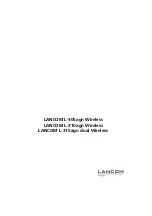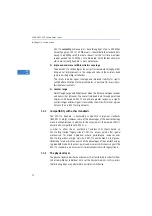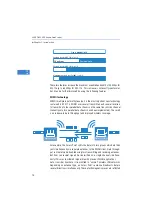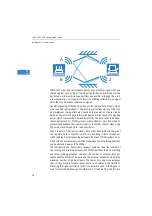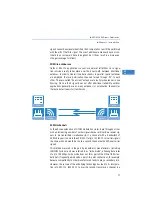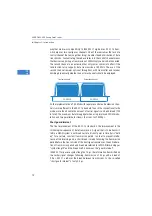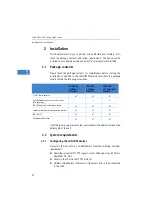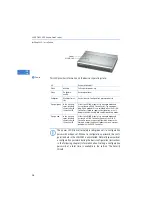
LANCOM L
-
300 Access Point series
Chapter 1: Introduction
11
EN
1.1.1
Modes of operation of wireless LANs and access points
Wireless LAN technology and access points in wireless LANs are used in the
following modes of operation:
Simple, direct connection between terminal devices with an access point
(ad-hoc mode)
Extensive wireless LANs, possibly connected to a LAN, with one or more
access points (infrastructure network)
Establishing access to the Internet
Connecting two LANs over a wireless link (point-to-point mode)
Connecting devices with an Ethernet interface via an access point (client
mode)
Extending an existing Ethernet network with a wireless LAN (bridge mode)
WDS (Wireless Distribution Systems)
Central administration using a LANCOM WLAN Controller
1.2
Wireless LANs in accordance with 802.11n
The new wireless LAN standard IEEE 802.11n—ratified as „WLAN Enhance-
ments for Higher Throughput“ in september 2009—features a number of
technical developments that promise up to six-times the performance in wire-
less LANs.
Some of the improvements refer to the physical layer (PHY), which describes
the transmission of individual bits over the physical medium—in this case the
air represents the physical medium. Other additions are concerned with the
MAC (medium access control) that among other things governs access to the
transmission medium. The two areas are treated separately below.
You can find additional information on this subject in the LCOS refe-
rence manual or in the technical papers relating to this topic.
1.2.1
Advantages of 802.11n
The new technology includes the following advantages:
Higher effective data throughput
The 802.11n standard includes a number of new mechanisms to signifi-
cantly increase available bandwidth. Current wireless LAN standards
based on 802.11a/g enable physical data rates (gross data rates) of up to
54 Mbps, which turn out to be approx. 22 Mbps net. Networks based on


